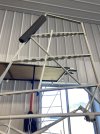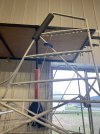Ghery
Touchdown! Greaser!
- Joined
- Feb 25, 2005
- Messages
- 10,903
- Location
- Olympia, Washington
- Display Name
Display name:
Ghery Pettit
Same here. And when the Tek 7L12 & 7L13 were the "standard" that even the FCC used.
Those were significantly newer than the HP 141T. We used a 7L13 when I worked for the Navy in the late 1970s. I really like the HP 8566A Spectrum Analyzer. A boat anchor (112 pounds, IIRC), but there was a button for every function. Easy to program over the GPIB interface. Not a menu in sight. Did I mention that I hate menu driven instruments?


